February 14, 2016 13052
Yeast is widely used in cooking. In order for them to give the desired result, you need to know how to choose them, store and check for freshness, and it is also important to be able to determine the correct ratio of dry and fresh yeast.
For different dishes - your kind of yeast. For pies and pastries, fresh or dry are most often used, for the production of mash and moonshine - pressed. High-speed granules are very convenient when there is no time to wait for the dough to rise.
Types of yeast
- Dry. Prepared by the method of evaporation of the liquid (humidity of dry yeast is not more than 8%). Mainly produced in granular form of different diameters and types;
- Fresh. They are popularly called "raw." The moisture concentration in them is 70%. They are usually produced in the form of a pressed rectangular piece (from 100 g to 1 kg). Their color can be from light to dark cream. Their scope is wide - pastries, mash, moonshine and so on;
- Granular. They are made by the method of evaporation of liquid (in them its content is up to 66%). Available in the form of small light granules;
- Institutional (high-speed). Available in the form of small long granules. The peculiarity of this species is that when used in baking, they do not give it a yeast smell and aroma. Therefore, they are so popular. They are mainly used for baking;
- Beers. Rarely used for baking, and if used, then diluted with half fresh. In their pure form, they give the baking a strong yeast smell, do not rise well. Brewer's yeast is mainly distributed as a biologically active food supplement.
The ratio of dry and fresh yeast in different cases
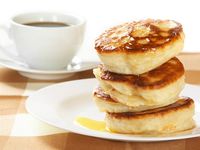
Yeast for baking can be correlated in the following proportion - 1: 3, that is, 3 g of fresh (raw) can be replaced with 1 g of dry (in 1 tsp. 3.5 g of dry).
The most accurate ratio for mash is 1: 6 - 100 g dry can replace 600 g raw.
For the preparation of moonshine, you can use both dry and raw yeast. 500 g of fresh can be safely replaced with 80-100 g of dry. The proportions obtained are close in value to 1: 5.
As a result, the exact amount in grams of fresh (pressed) will be released.
50 g of raw yeast is equal to 1 sachet of dry.
Proportions of replacing dry fresh:
- 1 tbsp. l dry equal to 25 g of pressed;
- 2 tbsp. l dry equal to 50 g of fresh;
- 3 tbsp. l \u003d 75 g.
We suggest watching a video on how to choose the optimal amount of dry yeast for mash:
Proportion Table
If you need to quickly determine the amount of yeast, for example, according to a prescription, having only a teaspoon on hand, then the following table will help:
How to determine freshness
By smell
A good fresh product should have a specific yeast odor. Sour milk smell is the main sign of the freshness of this product.
If the bite smells musty, it means that this yeast has been lying for a long time and, possibly, the process of spoiling or decay has already begun in them. In this case, they not only do not bring benefits, but can also harm the human body.
By color
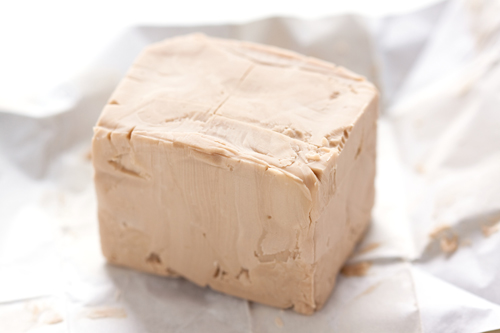 A good fresh yeast stick should have a natural cream color.
A good fresh yeast stick should have a natural cream color.
The color of the whole bar should be uniform, without dark spots and traces of spoilage.
The white top layer of the piece is a sign that it has been lying for a long time. But this is not a sign of damage.
It is enough to cut off the top layer and it can be used for its intended purpose.
Consistency
First of all, the consistency of a quality product must be uniformly and densely pressed. There should be no voids and clearly marked layers on the cut.
A piece should crumble easily in the hands, without sticking to the fingers. Yeast should break into small pieces, and not spread.
If they become sticky, then they can no longer be saved - just throw them away. The appearance of a dark layer on the bar is still unacceptable.
Darkening means that the yeast was not stored properly and lost all its beneficial properties.
If white plaque can be cut and the rest used, then a piece of dark plaque can only be thrown away.
Rules for long-term storage
How to store pressed yeast:
- In order to preserve the properties of pressed yeast for a long time, they must be crushed into very small pieces and mixed with a small amount of flour. Grind everything. Lay out on a paper towel so that all moisture evaporates. Leave for 1-2 hours. Pour the resulting mass into a glass jar and put in a dark cool place. So they can remain fresh for 20-30 days;
- Residues can be saved as follows. Put the remaining piece in a glass jar. Pour in sunflower oil so that it completely hides a piece. Tightly close the jar and put it in the refrigerator on the lower shelf. When you need to - get a bar from a can and you can use it for its intended purpose;
- The optimum temperature for storing fresh yeast is from 0 ° to 4 ° C. At such temperature conditions, they are able to remain suitable for 2 weeks.
Yeast is most often used for baking various delicacies. Oladushki is always held in high esteem!
And in you will learn all about cooking pies in the oven. For you the most best recipes our grandmothers.
How to store dry yeast:
- Shelf life of dry - from 6 to 12 months in a closed bag. In this case, the temperature should not exceed 15 ° C;
- Opened packaging can be stored for up to 1 month. To do this, place it in a glass container and tightly close the lid so that air does not enter them;
- The opened bag can be wrapped and glued with tape. If this is done immediately after opening, it can be stored in this condition for up to 4 months.
How to check a raw product for a lift at home
After purchasing or storing yeast, they must be checked for lift.
No matter what they will be used for (baking or mash), you need to check in any case.
![]() To check, you need to take a small piece (5-10 g), crumble it into small pieces and put in a glass. Pour there about 20-30 ml of warm water (30 ° -35 °). Stir and leave for 15-20 minutes.
To check, you need to take a small piece (5-10 g), crumble it into small pieces and put in a glass. Pour there about 20-30 ml of warm water (30 ° -35 °). Stir and leave for 15-20 minutes.
A good product during this time should go into the fermentation process. Foam should form on the surface.
The thicker and higher the foam, the fresher the yeast. If no signs of fermentation appear, then they cannot be used, there will be no sense with them.
Dry yeast can be checked in the same way.
Pressed yeast leaves the freezer for a very long time - sometimes it must lie all day. Never try defrosting them with a microwave or oven. They should only depart at room temperature.
If there is no time to wait, then you can do the following. Chip the desired piece from the frozen bar. Crush it with a knife or fork.
Put in a glass and pour 30 ml of water (35 ° C). Stir until all the crumbs dissolve. Leave on for 15 minutes to check for fermentation.
It is worth remembering that all yeast at a temperature of more than 30 ° C deteriorates, so they must be stored properly.
In order for him to give the desired result, you do not need to put a lot of effort. All that is required is to choose them correctly and accurately calculate the proportions and the ratio of dry to fresh yeast and vice versa.
They do not become a good housewife right away. In any new business, there is a period of trial and error, and experience and knowledge help to overcome it. Since accurate meters are not always at hand, we’ll try to figure out how the information about how many grams of yeast in a teaspoon will help us.
We will immediately determine the answer to the main question - how many grams of yeast are in 1 teaspoon. It contains 5 g, but with the condition that the spoon is filled from the heart with a slide. When filling hasty, that is, without a tubercle, 3 grams will fit in it. Now, knowing such important information, we consider situations when it becomes necessary to measure this product mainly with teaspoons.
Why is such a small capacity chosen instead of a mug or a cup as a measure, and indeed, what is yeast and why do housewives need them? People tend to eat tasty food, of course, if we are not on a healthy diet or do not starve ourselves in pursuit of a slim figure.
An integral part of goodies at all times was baking - rolls, pies, pies, cakes and much more. So, all of the above and even more unspecified, it would be impossible to cook in the absence of yeast. These are unicellular mushrooms that a person uses in such areas of his activity as:
- bread baking;
- winemaking;
- brewing;
- making kvass;
- alcohol production;
- the medicine;
- research.
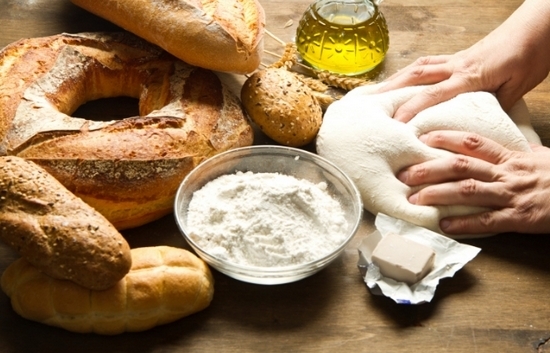
In addition to the above, yeast is also used as a food and feed additive. Most of all from the above list of ordinary housewives, of course, baking is of interest. Manufacture yeast dough necessary in many recipes of all kinds of goodies.
The modern food industry for the implementation of culinary fantasies of fans of cooking with their own hands is on sale not only pressed fresh yeast, but also dry, active or instant. This is a granular product that requires activation in the first case by placing it in warm water with keeping it in it and stirring, and in the second case, direct addition to the flour.
Of particular interest are instant yeast with enhanced lifting effect. These small granules, due to their size, quickly dissolve in the dough. It is such yeast that requires the ability to accurately measure in the process of preparing goodies.
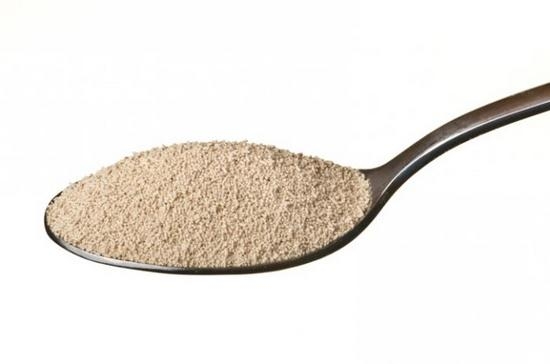
The use of a teaspoon as a meter is determined by a sufficiently small amount of yeast required to make a dough for a standard batch of the same buns, crumpets, fried or gingerbread cakes, pizza and so on.
Of course, if you want to feed a whole horde of hungry, then here you can’t get off with teaspoons, but at home it is extremely rare and quite inexpedient. Let's look at a table illustrating how many grams of yeast will fit in certain containers, including a teaspoon.
It should be borne in mind that modern teaspoons vary in configuration and depth. In our calculations, we use a standard tableware for consuming jam or stirring sugar in tea, the volume of which is 5 ml. In addition, you must also remember the fullness of the measurement - with or without a slide.
So, we will solve some easy problems:
- Question: 10 grams of yeast is how many teaspoons? Answer: two teaspoons filled with a slide.
- Question: 6 grams of yeast is how many teaspoons? Answer: two teaspoons with filling without a tubercle.
Particular attention should be paid to occupancy measurements. It has a direct effect on the exact weight of the required ingredient, on which, in turn, the quality of the product, in turn, determines the final result.
Yeast is a tricky substance, and shifting them or putting in insufficient quantities, we risk irreparably spoiling the dough, and, consequently, the culinary masterpiece itself, which because of this will not actually be it.
Alternative weighting
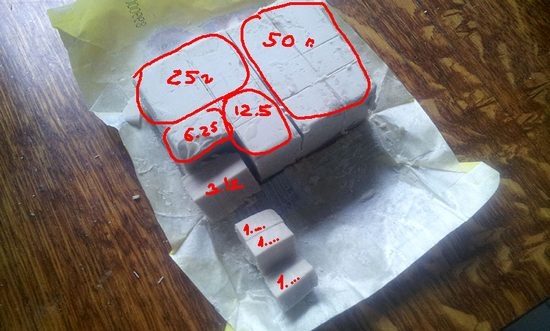
We will analyze several alternative measurement options that can come to the rescue. The manufacturer packs the dry yeast and on the packaging necessarily indicates their mass. By measuring with teaspoons the entire volume of the package, we can set the weight of the product in one. To do this, we use a simple arithmetic action to find the relationship.
The value indicated on the bag will be divisible, and the number of spoons obtained as a result of measurements will be the divisor. Strict observance of the filling of the measurement will help to reduce the error. Naturally, for experience it is necessary to choose the smallest of the line of packages of different weights provided by the manufacturer to the distribution network. It is also worth noting that the use of electronic scales will help with measuring the right amount of yeast in grams according to the recipe.
We measure dry yeast
How to measure approximately 1/4, 1/8 teaspoon of dry yeast.
How to measure yeast with a medical syringe.
The ratio of dry and fresh yeast.
Beginner bakers, inspired by their first successes and wanting to go further and bake bread in accordance with GOST, will certainly have a problem how to measure a small amount of yeast at least approximately.
A small amount is when the recipe indicates, for example, 1.42 g or 0.8 g or ¼ - ⅛ teaspoon. Many are interested in how to do this approximately?
You can measure accurately if you buy high-precision electronic scales in increments of 0.01 g or.
However, not every beginner baker is sure that he will be enough for a long time. We have a shortage of time. Therefore, we are in no hurry to buy high-precision scales, measuring spoons and measuring dishes for small volumes.
If you really want to try to bake bread right now, and a prescription requires a quarter or eighth of a teaspoon of yeast, there is a very worthy way.
You can adapt a 5 ml medical syringe under a measuring spoon. Everything is simple: we take out the piston from the syringe (see photo above) and hold it by the needle in the case. Here you have a 5ml measuring spoon with a scale of 0.2 ml.
Cut off the corner of the bag with yeast and carefully pour the right amount of ml. According to the rules for any measuring utensils do not shake the yeast.
If needed half a teaspoon, pour 2.5 ml,
for a quarter - 1.25 ml,
for the eighth part - 0.625.
Naturally, we cannot measure hundredths, tenths - approximately. Well, these are trifles.
With recipes where yeast is indicated in fractions from a teaspoon, this method is quite suitable.
Another thing, if the recipe contains yeast in grams.
Then you have to determine: how many grams of yeast in 1 ml.
You can believe the data from the Internet that in a teaspoon 4 g or 3 g of dry yeast.
Unfortunately, there are different data. You can define for yourself for specific yeast. I tried several times with a syringe, without shaking, a packet of Saf-Moment.
On average, I got 17.5 ml in a bag.
So, in a bag of 11 g of yeast, in 1 ml - 0.63 g of yeast,
then in 5ml - 3.15g, i.e. in a teaspoon that contains 5 ml, about 3 g of Saf-Moment high-speed yeast is obtained.
By the way, one division of a 0.2 ml syringe is 0.125 g, but this is the subtlety.
Determine: how many ml will be the desired weight.
Divide the weight of yeast in grams by the weight of one ml.
For instance,
1g: 0.63g \u003d 1.6ml
1.47g: 0.63 \u003d 2.33ml
To my surprise, in my opinion measurements of active yeast Saf-Levure in a teaspoon (in 5ml) - 5 g. But it is very convenient, 1 ml - 1 g.
Perhaps I have an open bag and the yeast has dried out, decreased in volume?
Everyone can remeasure himself:
Lay on a paper towel to prevent yeast from rolling out.
Dump the container.
Measure on a napkin with a syringe, say 4 times 5 ml of yeast.
I think that the scales will show 20g, then everything is correct, in 5 ml of 5 grams of Saf-Levyur yeast.
Oddly enough, home bakers today can not do without arithmetic.
For example, to convert the amount of pressed (wet, fresh) yeast to dry or vice versa, there is a popular proportion:
Dry active to pressed 1: 3
Dry quick to pressed 1: 3,5.
However, there are other numbers on the network: 4: 1; 2.5: 1.
How to find out where the truth is?
To be sure of the proportion, you should first look at the packaging. Not always, but often there it is reported.
On the package high-speed yeast Dr. Oetker it is written: 7 grams of dry yeast is equivalent to 25 grams of fresh yeast, i.e. 1: 3.5.
If there is no data on the packaging, you can proceed to the manufacturer's website and read about the ratio of dry to fresh yeast in questions and answers or on the forum.
For example, on a company’s website Saf-Neva reported that the replacement ratio of pressed yeast “Record Red” brands to dry ones, for example, “Nevada”, “Saf-Instant Red” - 3: 1, i.e. 3 kg of pressed are equal to 1 kg of dry yeast.
By the way, the Saf-Neva website has a very good forum. An experienced technology consultant answers questions about bread there. You can ask a question and read a lot of interesting things.
Another piece of advice on measuring utensils: it’s worth buying a small measuring cup for 100 ml with a 10 ml scale, it is useful for yourself to experimentally learn and write down how much liquid is left for a particular flour. Despite the fact that the same flour is different at different times of the year (it differs in humidity), and yet these notes will help to be closer to the truth next time.
© 2015,. All rights reserved
Proportion of replacement of raw yeast with dry:
7 g raw yeast -1 tsp or 0.5 tbsp dry
10 g raw yeast -1.5 tsp or 0.75 dry
13 g of raw yeast -2 tsp or 1 tbsp. dry spoon
The ratio of dry to fresh pressed yeast
When baking, the question always arises of how much and what kind of yeast is better to put in it and how much dry yeast to replace with fresh yeast, if this is not indicated in the recipe.
Fresh yeast - how to distinguish whether they are good?
Fresh yeast is very plastic, but does not stick, and does not stick on the fingers. And pluck off layers, like a good home-made cottage cheese. Only in cottage cheese these layers are large, and in yeast small. When broken, pieces of yeast “creak” on the fingers.
The color is gray, with veins of different tones, and the more a yellowish-brownish hue, the more stale the yeast.
Be sure to pay attention to the corners of the piece, they must be exactly the same as the bulk of the whole "cube" of yeast. If they are windward, also stale.
And the smell of very fresh, unladen yeast cannot be confused with anything.
It smells "spicy" and "bread." When there is a sweetness in the smell, or just smells unpleasant, it is better not to take such.
Fresh (pressed) and dry yeast are interchangeable
In short, 1 g of dry yeast is equivalent in weight to 3 g of live pressed yeast. That is, if you have 30 g of fresh pressed yeast in your recipe, you can replace them with 10 grams of dried yeast (divided by 3).
According to various sources, 2 teaspoons of dried yeast is equivalent to 25 grams of fresh yeast and 10 g of fresh pressed yeast is equivalent to 1 tsp. dry that doesn't match a bit
15 g of fresh yeast is equivalent to 1 tablespoon of dry yeast in granules.
In Easter cakes, they usually take 4 grams of fresh yeast per 100 grams of flour.
In general, on sachets with yeast it is usually written how many pressed yeast is equivalent and how many grams of flour is calculated, these figures vary depending on the manufacturer, so read on the packaging.
Here are the data on instant yeast that is added directly to the flour:
Dr. Oetker yeast dry quick-acting, in a bag of 7 g.
A bag for 500 g of flour is calculated.
The content is equivalent to 21-25 g of fresh yeast, i.e. half yeast cube.
Thus, if the recipe costs 50 g of fresh yeast, then you need about 2-2.5 bags of dry.
One sachet of SAF-MOMENT 11 g corresponds to 60 grams of fresh yeast and goes for 1 kg of flour. There are approximately 4 teaspoons in this bag.
That is, one teaspoon of SAF-MOMENT corresponds to about 15 grams of fresh pressed yeast.
And remember, all varieties of yeast ferment as quickly as possible at a temperature of 30 ° C - a little hotter, and the yeast will be spoiled.
RECIPE SOURCE
When baking, the question always arises of how much and what kind of yeast is better to put in it and how much dry yeast to replace with fresh yeast, if this is not indicated in the recipe.
Fresh yeast - how to distinguish whether they are good?
Fresh yeast is very plastic, but does not stick, and does not stick on the fingers. And pluck off layers, like a good home-made cottage cheese. Only in cottage cheese these layers are large, and in yeast small. When broken, pieces of yeast “creak” on the fingers.
The color is gray, with veins of different tones, and the more a yellowish-brownish hue, the more stale the yeast.
Be sure to pay attention to the corners of the piece, they must be exactly the same as the bulk of the whole "cube" of yeast. If they are windward, also stale.
And the smell of very fresh, unladen yeast cannot be confused with anything.
It smells "spicy" and "bread." When there is a sweetness in the smell, or just smells unpleasant, it is better not to take such.
Fresh (pressed) and dry yeast are interchangeable.
In short, 1 g of dry yeast is equivalent in weight to 3 g of live pressed yeast. That is, if you have 30 g of fresh pressed yeast in your recipe, you can replace them with 10 grams of dried yeast (divided by 3).
According to various sources, 2 teaspoons of dried yeast is equivalent to 25 grams of fresh yeast and 10 g of fresh pressed yeast is equivalent to 1 tsp. dry that doesn't match a bit
15 g of fresh yeast is equivalent to 1 tablespoon of dry yeast in granules.
In Easter cakes, they usually take 4 grams of fresh yeast per 100 grams of flour.
In general, on sachets with yeast it is usually written how many pressed yeast is equivalent and how many grams of flour is calculated, these figures vary depending on the manufacturer, so read on the packaging.
Here are the data on instant yeast that is added directly to the flour:
Dr. Oetker yeast dry quick-acting, in a bag of 7 g. A bag for 500 g of flour is calculated. The content is equivalent to 21-25 g of fresh yeast, i.e. half yeast cube. Thus, if the recipe costs 50 g of fresh yeast, then you need about 2-2.5 bags of dry.
One sachet of SAF-MOMENT 11 g corresponds to 60 grams of fresh yeast and goes for 1 kg of flour. There are approximately 4 teaspoons in this bag. That is, one teaspoon of SAF-MOMENT corresponds to about 15 grams of fresh pressed yeast.
And remember, all varieties of yeast ferment as quickly as possible at a temperature of 30 ° C - a little hotter, and the yeast will be spoiled.

